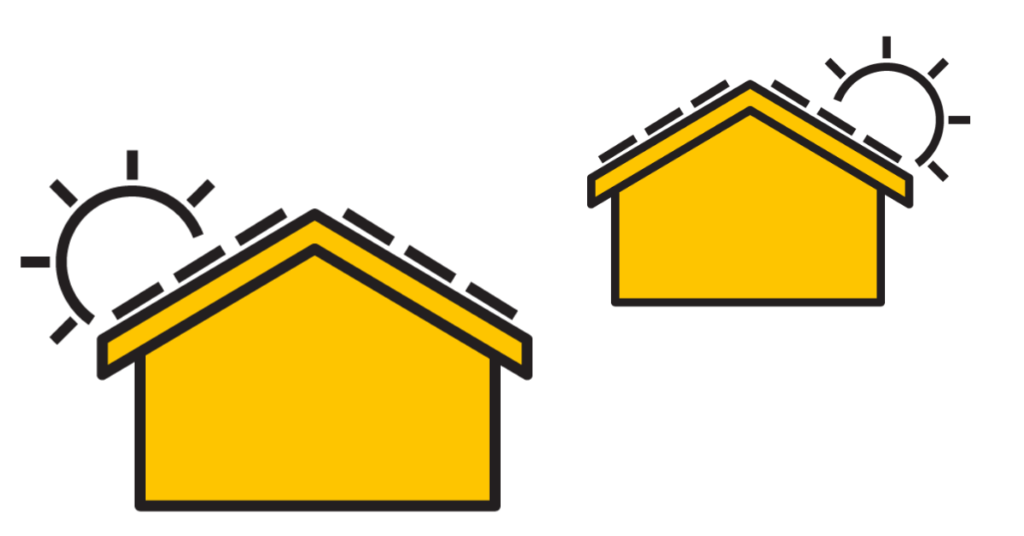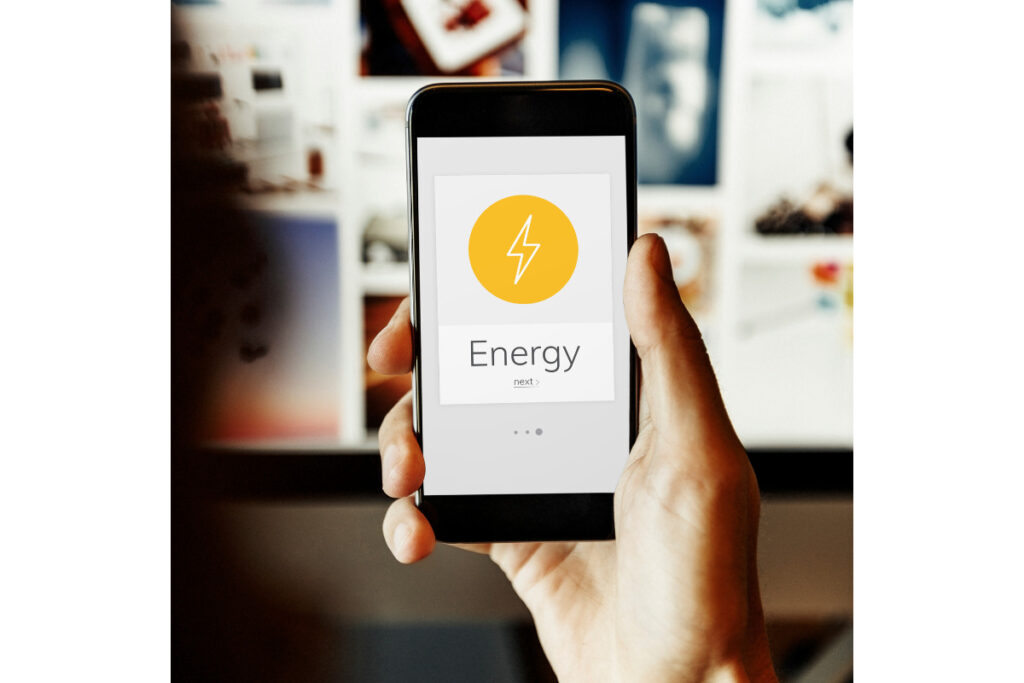Introduction
Harnessing solar energy is a smart and sustainable choice for Sacramento Municipal Utility District (SMUD) homeowners. Installing solar panels not only reduces your environmental impact but also results in significant savings on your energy bills. However, navigating the process with various permit requirements, incentives, and installation steps can seem daunting. We have developed a comprehensive step-by-step guide for installing solar panels within SMUD’s jurisdiction to ensure you have all the necessary information. This guide will break down everything you need to know, making the installation process easier to understand and navigate.
| Key Takeaways: |
|---|
| To install solar panels in Sacramento Municipal Utility District (SMUD), homeowners need to meet eligibility criteria for SMUD solar incentives, obtain necessary permits and complete required paperwork, and choose the right solar panel system based on their energy needs. |
| Conducting an energy audit and assessing roof location and orientation can help determine your solar potential. Finding a reliable and reputable solar company requires research, including checking certifications, reading reviews, asking for references, comparing prices and timelines, and considering maintenance services. |
| Estimating the size of your solar system needed involves calculating your energy consumption from utility bills or conducting an energy audit. Getting quotes from multiple installers is recommended to ensure getting the best deal possible while generating significant savings on monthly electricity bills. |
Understanding Sacramento Municipal Utility District (SMUD) Guidelines
To install solar panels in SMUD, homeowners must first understand the eligibility criteria for SMUD solar incentives. Additionally, they must obtain the required permits and paperwork before selecting the right solar panel system.
Eligibility Criteria For Sacramento Municipal Utility District Solar Incentives
To be eligible for solar incentives offered by Sacramento Municipal Utility District (SMUD), there are a few essential criteria that homeowners need to meet. Firstly, the property must lie within SMUD’s service territory to qualify for rebates and incentives.
To maximize the benefits of these incentives, homeowners must ensure they meet interconnection requirements as set by SMUD. For instance, a bi-directional meter must be installed at your property to track energy production and consumption under the Net Energy Metering (NEM) program.
Moreover, obtaining permits from local building authorities is mandatory before commencing any solar installation work on your premises.

Required Permits And Paperwork
Before installing solar panels, homeowners in Sacramento Municipal Utility District (SMUD) must obtain the necessary permits and complete the required paperwork. Here are the key steps to follow:
- Obtain a permit from the city: The first step to building a solar installation is to obtain a permit from the appropriate city department. In Sacramento, this is typically the Planning Department or Building Division.
- Complete building permits and rebates: Homeowners must complete necessary building permits and rebates to be eligible for solar panel installation incentives offered by SMUD.
- Hire a qualified solar company: A reliable solar company will handle most of the paperwork and permit applications for you, ensuring everything is correctly filled out.
- Prepare electrical panels: Homeowners should hire professionals to rewire or replace electrical panels before installing solar panels.
- Connect your system to the grid: Solar systems must be connected through an interconnection agreement with SMUD.
By following these steps, homeowners can ensure that their solar panel installations meet all necessary permit requirements while taking advantage of available incentives and rebates in SMUD.
Choosing The Right Solar Panel System
You need to consider several factors to choose the right solar panel system for your home in Sacramento Municipal Utility District (SMUD). First, consider the type of solar panels you want to install – monocrystalline, polycrystalline, and thin-film options are available on the market.
Monocrystalline panels are known for their high efficiency but are more expensive than others.
Next, determine whether you want a grid-tied or off-grid system. Grid-tied systems connect to SMUD’s power grid and can earn you credits towards your energy bill if your panels produce excess electricity.
Another factor to remember when selecting a solar panel system is its output capacity, which should be based on how much electricity your household consumes daily.
For example, if you consume 25 kWh daily, a 7 kW system would meet your needs and save you monthly utility bills by generating enough power from the sun over time.
Types Of Solar Panel Systems
There are several solar panel systems, depending on your needs and preferences. Consider each option’s efficiency, aesthetics, and costs when deciding. The table below highlights the main types of solar panels available.
| Type | Efficiency | Aesthetics | Cost |
|---|---|---|---|
| Monocrystalline | High | Sleek, black appearance | Higher initial cost |
| Polycrystalline | Medium | Blue hue, less uniform appearance lower lower | Lower initial costing |
| Thin-film | Low | Flexible, can blend with various surfaces | Lowest initial cost |
| Concentrated Solar Power (CSP) | High | Large-scale installations, not suitable for residential | Varies depending on the scale |
Each system has advantages and disadvantages, so it’s essential to carefully consider which option best aligns with your needs, budget, and property aesthetics. Consulting with a solar installer can help you choose the right system for your home in the Sacramento Municipal Utility District.
Pre-Installation Steps
Before installing your solar panel system, conducting an energy audit and determining your solar potential is important.
Conducting An Energy Audit
Before installing solar panels in your home, it’s important to conduct an energy audit to determine how much energy your house uses and where you can make improvements to reduce consumption. Here are some steps to conducting an energy audit:
- Check for air leaks: Look for gaps or cracks around windows, doors, and walls that could let in outside air. Use caulk or weatherstripping to seal any leaks you find.
- Check insulation: Inspect the attic, walls, and basement or crawlspace for adequate insulation. Add more insulation as needed.
- Check lighting: Switch to LED bulbs if you haven’t already, as they consume less power and last longer than traditional incandescent bulbs.
- Assess appliances: Consider upgrading old appliances with new Energy Star-approved models that use less energy.
- Monitor energy usage: Use a home energy monitor like the Sense Home Energy Monitor to track your electricity consumption from all devices in real time and identify areas where you can save energy.
By conducting an energy audit before installing solar panels, you will get a better sense of how much electricity your household uses on average and what measures can be taken to improve efficiency further.
Determining Your Solar Potential
To determine your solar potential, you must conduct an energy audit of your home. This involves understanding how much electricity you currently consume and the areas in which you can reduce power usage.
You’ll also want to assess the location and orientation of your roof. A south-facing or west-facing solar panel is ideal for maximizing solar exposure, while a heavily shaded roof may not be suitable for solar panels.
Remember that while some DIY solar panel installations are possible with basic electrical knowledge and proper training from professionals or online guides, a licensed electrician should always do rewiring or replacing electrical panels.

Researching And Comparing Solar Companies
Finding a reliable and reputable solar company is one of the most crucial steps in installing solar panels. Here are some tips for researching and comparing solar companies:
- Check their certifications: When searching for solar installation companies, it is advisable to look for those certified by reputable organizations, such as the North American Board of Certified Energy Practitioners (NABCEP) or the Solar Energy Industries Association (SEIA). These certifications ensure that the company meets high standards of professionalism and expertise in the solar industry.
- Read reviews: To gain insights into a company’s performance, take the time to review online feedback from previous customers. These reviews provide valuable information about the company’s service quality, installation process, and post-installation support. By considering the experiences of others, you can make a more informed decision about choosing the right company for you.
- Ask for references: Don’t hesitate to ask the company for references from previous clients who have had a similar installation done.
- Compare prices: Get quotes from multiple solar companies and compare pricing, including installation costs, equipment costs, warranties, and financing options.
- Consider installation timelines: Ask each company how long it takes them to complete an installation and compare this timeline with other companies.
- Inquire about maintenance services: Find out what kind of maintenance services each company offers. Also, ask whether they provide ongoing monitoring of your system’s performance.
By doing your research, you can ensure that you choose a reputable solar company that will provide high-quality installation services and support throughout the lifespan of your solar system.
Steps To Installing Solar Panels
To install solar panels, you need to estimate the size of your solar system and get quotes from installers. This includes completing building permits and rebates, connecting the panels to the grid, and scheduling inspections.
Estimating The Size Of The Solar System Needed
Before installing solar panels, estimating the size of the solar system you need for your home is crucial. This involves looking at factors such as your energy consumption, available roof space, and budget.
To determine your energy consumption, look at your utility bills and calculate how much electricity you use on average per month.
Once you know how much electricity you use, look for a solar panel system to generate enough power to meet your needs. Remember that not all roofs are suitable for solar panels. Some may be too small or shaded by trees or nearby buildings.
A reputable installer can help you choose the right type and size of solar panel system based on your circumstances and preferences while keeping in mind SMUD eligibility criteria for incentives and permit requirements outlined in their guide “Going Solar with SMUD: What You Need to Know.”
Obtaining Quotes From Solar Installers
Obtaining quotes from several solar companies is essential to get the best value for your money and ensure that you hire a reliable installer. Here are some steps to follow:
- Research and compare: Research different solar providers in Sacramento Municipal Utility District (SMUD) and compare their services, pricing, customer reviews, and warranties.
- Request quotes: Once you’ve narrowed your list of potential installers, contact each and request a detailed quote for your solar installation project. Make sure the quote includes a breakdown of costs, equipment used, system design, warranties offered, financing options, and estimated energy savings.
- Compare quotes: After receiving quotes from different installers, take the time to compare them side-by-side. Look for any pricing or service offerings differences that might impact your decision.
- Ask questions: Don’t be afraid to ask questions about any part of the quote that’s unclear or confusing. A good installer should be willing to answer your questions honestly and transparently.
- Check credentials: Verify that the solar company you choose has appropriate licenses, certifications, insurance policies, and references before signing any contracts.
By following these steps and comparing written quotes from multiple installers in SMUD’s service area, you can decide which company to hire for your solar installation project.

Completing Building Permits And Rebates
Homeowners need to obtain building permits and rebates before installing solar panels. These permits ensure that the installation complies with safety standards and regulations. The following steps need to be taken:
- Complete the building permit application and attach the necessary documentation, such as structural plans, electrical diagrams, and equipment specifications.
- Submit the completed application to the city’s building department for review.
- Schedule an inspection with a city inspector once your solar panel system is installed.
- Contact SMUD to check your eligibility for available rebates or incentives.
- Fill out all rebate paperwork and submit it to SMUD for approval.
Completing these necessary steps will ensure that your solar panel system is installed safely, legally, and in compliance with all regulations while taking advantage of any available benefits from SMUD.
Connecting Your Solar Panels To The Grid
Once your solar panels are installed and ready to generate electricity, the next step is to connect them to the grid. This process involves obtaining interconnection approval from SMUD and installing a net metering system that measures energy exchange between your solar installation and the grid.
It’s important to note that connecting your solar panels to the grid requires proper permits and approvals from SMUD, which will ensure compliance with safety standards.
You’ll need an electrician or qualified installer to handle this part of the process, as they have experience with the wiring and electrical work necessary for safe interconnection.
Scheduling Inspections
Once your solar panel installation is complete, you must schedule inspections to ensure everything is up to code. Here are the steps involved in scheduling inspections:
- Notify the city building department: Once the installation is complete, notify the city building department that an inspection is required.
- Prepare for inspections: Ensure all necessary documents and permits are ready for inspection.
- Schedule an appointment: Call the building department or go online to schedule an appointment for an inspection.
- Wait for inspection: An inspector will visit your property. They will check if your solar panels meet safety standards and local codes.
- Address any issues found during inspection: If any issues are found during inspection, you will need to address them before final approval is given.
- Get final approval: Once all requirements are met, you will receive a certificate of completion. It’ll state your solar panel system has been approved and can be used safely.
Remember that passing inspections is crucial in ensuring your solar panel system meets safety standards and local codes. Having a properly installed system will give you peace of mind. In addition, it’ll make it easier to resell your home in the future with an increased value due to renewable energy systems installed by SMUD incentives.
Maintenance And Monitoring
Regularly inspecting and cleaning the panels is important to ensure their efficiency. Homeowners should also monitor their energy production and consumption to make sure they are maximizing savings.
Regularly Inspecting And Cleaning The Panels
The maintenance and monitoring of solar panels are crucial to ensure optimal energy production. Regular inspection and cleaning of the panels will help prolong their lifespan. Here’s what you need to know about maintaining your solar panels:
- Inspect the panels at least once a year: Check for any damage or debris on the panels’ surface that may obstruct sunlight. This includes leaves, dirt, and bird droppings.
- Clean the panels regularly: Use a soft, non-abrasive brush and water to remove any buildup of debris or grime from the surface. Avoid harsh chemicals or high-pressure washers, as they may cause damage to the panels.
- Monitor daily energy production: Monitor your daily solar energy production regularly to quickly identify any fluctuations in output, indicating potential system issues.
- Schedule professional maintenance: Every few years, it’s recommended to have a professional inspect your solar panel system for any wear and tear that needs repairing.
Regularly inspecting and cleaning your solar panels can ensure maximum energy production and prolong lifespan. Additionally, monitoring energy production will help you identify if there is a problem with your system before it becomes a bigger issue.

Monitoring Energy Production And Consumption
After installing your solar panels, it’s important to regularly monitor their energy production and consumption. This will help you track how much energy your system generates and whether it’s meeting your home’s needs.
One way to monitor your solar panel system is through an online platform that tracks real-time energy production. SMUD offers a free monitoring service called My Energy Tools which displays live data of your electricity usage, costs, and savings from your solar panels.
By logging into this portal, you can see any power supply disruptions or if the panels’ performance has dropped below normal levels.
By monitoring the energy produced by your solar panels, you will save money on electricity bills. You’ll also contribute towards a greener environment while increasing property value at the same time.
Conclusion And Benefits Of Going Solar With SMUD
Going solar with SMUD helps reduce energy bills and promotes sustainable living and environmental benefits. At the same time, it increases property value and energy independence.
Reduced Energy Bills
You can significantly reduce your energy bills by installing a solar panel system in your home with SMUD. Solar panels generate electricity from the sun’s rays. Any excess energy produced is sent back to the grid and credited to your account.
This process, called net metering, allows you to offset any additional energy consumed when necessary. According to SMUD’s website, homeowners who install solar panels typically save an average of $30-$50 monthly on their electricity bills.
Moreover, if you produce more electricity than you consume during certain periods of the year or over time, SMUD will credit your account for future use.
Environmental Benefits
Installing solar panels in Sacramento Municipal Utility District has many environmental benefits. First and foremost, it reduces carbon emissions by decreasing the use of fossil fuels that produce harmful greenhouse gases.
According to research, installing a 5-kilowatt solar panel system can offset as much carbon as planting over 100 trees yearly.
Solar installations provide another benefit by reducing water usage and pollution from electricity production activities. This includes fracking or coal mining operations. Moreover, using Solar Power reduces dependency on non-renewable resources providing clean and sustainable power for future generations.

Increase In Property Value
Solar panels are a sought-after feature for homes, particularly in California, where renewable energy is highly valued. Going solar with SMUD not only provides environmental benefits and reduced energy bills. But it can also increase the value of your property.
Homebuyers are willing to pay an average of $4 per watt for installed solar capacity on a home, as the National Renewable Energy Laboratory reported. This means that if you install a 6-kilowatt system, it could potentially add $24,000 to the value of your property.
Improved Energy Independence
Installing solar panels in SMUD helps reduce energy bills and environmental impact and promotes energy independence. A solar power system allows homeowners t generate electricity and reduce dependence on the utility company for energy needs.
This means that homeowners have control over their energy production while avoiding fluctuations in electricity rates from the utility provider. Additionally, net metering allows homeowners to sell excess energy produced to the grid during peak hours when demand is high, resulting in credits towards future bills or cashback from SMUD.
![]()
Want To Go Solar?
Ready to positively impact the environment and save money on your energy bills? Well, look no further. DroneQuote is here to assist you every step of the way in installing solar panels with net metering. Moreover, our team of experts specializes in solar and roofing services and is dedicated to providing high-quality installations tailored to your specific needs.
Sign up today to schedule a consultation and discover how we can help you harness the power of solar energy. Moreover, with our expertise, let us guide you through the process. Firstly, we’ll assess your home’s suitability for solar panels. Then, we’ll handle the paperwork and ensure a seamless installation.
Take the first step towards a sustainable future by partnering with DroneQuote. Together, let’s make a difference by embracing clean, renewable energy and enjoying its numerous benefits.

FAQs
- What is the first step in installing Sacramento Municipal Utility District solar panels?
The first step in installing solar panels is determining your energy needs and goals for switching to solar power. To determine the number of panels needed and the optimal system for your home, you have a couple of options. Firstly, you can make use of online calculators available. Additionally, consulting a licensed installer can offer a more precise assessment tailored to your specific requirements and site conditions.
- Do I need a permit to install solar panels in SMUD?
Yes, SMUD requires all homeowners who want to install solar panels on their properties to obtain permits before installation begins. The permit process ensures that all installations meet safety standards and adhere to local building codes.
- Can I install my own solar panel system?
While homeowners have the option to handle certain aspects of the installation themselves, it is recommended to hire experienced professionals. These professionals deeply understand the complexities of setting up an efficient and safe solar panel system.
- How much money can I save by switching to a solar-powered home?
The amount of money you can save by switching to solar power depends on various factors. These include the size of the installed system, state incentives, and tax credits available. Most homeowners generally save around $1000-1500 annually on electricity bills. The return on investment (ROI) is typically achieved within 5-6 years. Although it can vary based on energy consumption habits and usage patterns over time.
